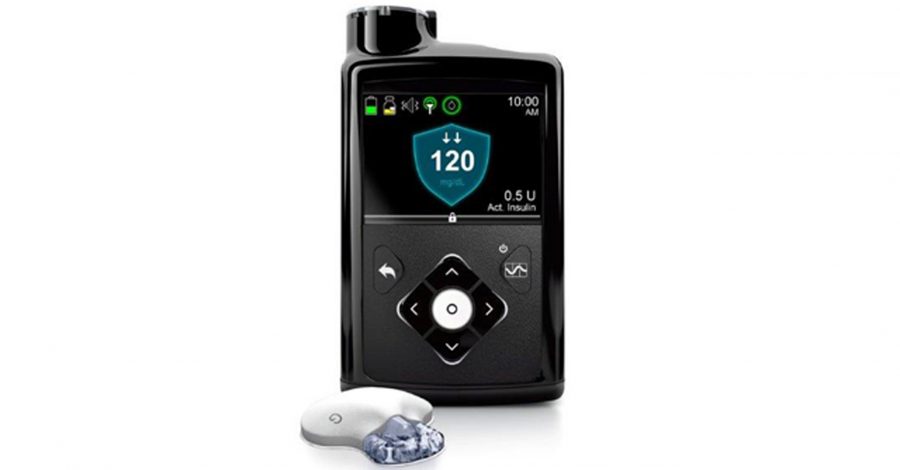Groundbreaking invention for type 1 diabetics
Medtronic releases insulin pump similar to artificial pancreas
Imagine having to prick your finger with a needle before every time you eat, when you wake up and before you go to bed. Imagine having to carry around an insulin pump on your waist and a glucose meter in your bag in order to take care of yourself. Imagine suddenly feeling very dizzy and unstable, then having to drop everything you’re doing and check your blood sugar.
This is the daily life of a Type 1 diabetic.
Type 1 diabetes is caused by the pancreas not being able to produce insulin for the body to use. Because of this, the patient has to continuously monitor blood glucose levels and make insulin corrections; however, companies like Medtronic have been working to make the lives of these patients easier.
On Sept. 28, Medtronic’s MiniMed 670hg insulin pump was approved by the FDA. This is the world’s first hybrid closed loop insulin pump, meaning that it only requires minimal input from the patient. This pump is specifically designed to help Type 1 diabetics of the age 14 or older.
The amazing thing about this pump is that it acts as an artificial pancreas by combining two of the most useful ways of controlling diabetes into one device. The two ways include the ability to continuously check the patient’s glucose number and make corrections for those numbers, along with continuously delivering personalized basal rates. The pump is predicted to be released for public use in spring 2017.
The continuous glucose monitor (CGM) is a device that was previously invented to be able to collect data from the patient roughly every five seconds. From a sensor injected in the patient’s skin, the CGM helps patients gain a better understanding for daily changes and patterns in their numbers and help them further better their diabetic care. This would be a separate injection site than that of the insulin pump, which delivers the insulin based off of the blood sugar rates.
The insulin pump is a device that works similar to a pancreas by delivering insulin at a specific rate overtime, or basal rate. Patients would have an injection site, and they can adjust basal rates, manually enter numbers to make corrections and enter carbohydrates for their food.
Medtronic’s new pump combines the features of the CGM, insulin pump and even the manual functions that the owner would have to do themselves. This pump uses Medtronic’s newest sensor to collect accurate blood sugar results, then detects any corrections needed. From there, it automatically asks for approval to administer the insulin from the owner. While that’s going on, a variable bolus amount is being delivered to maintain a target blood sugar level.
As you may have noticed, this pump still requires minimal user maintenance. In addition to this, the user does have to manually make a correction for meals and snacks.
However, there is no doubt that this pump requires extraordinarily less user maintenance than other regular insulin pumps. Being able to have the freedom of only having to check your number once or twice a day instead of six times doesn’t sound like a big difference, but it is. With a regular insulin pump, the user would have to check before exercise, eating and sleeping, which can be a hassle. Not only that, but the chance of having a low blood sugar during the night without being aware of it is extremely dangerous. In addition, since the insulin pump requires more user input, there is also a higher risk for typos, which affect the overall efficiency of the pump.
The Medtronic Minimed 670hg is more efficient in that it has the technology to make the user be able to monitor their body trends in real time from a small screen. Not only can it record and display it, though, it can also comprehend and automatically adjust the dosages to correct for incidents along the road. This pump is truly a groundbreaking invention that will drastically improve the millions of lives impacted by diabetes. This pump is the closest invention to the goal of all diabetic researchers, the artificial pancreas.



